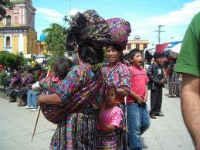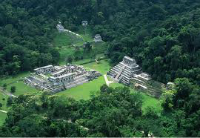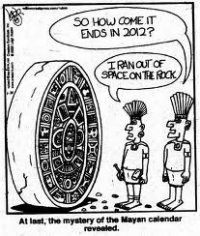Main Navigation
- Welcome - Bienvenido
- Gane Dinero - Earn Money
- Government - Gobierno
- Free Ads-Anuncios Gratis
- History - Historia
- Puerto Cortes
- Sitemap-Directorio
- Tegucigalpa
- Viajes - Travel
- La Ceiba
- Credit - Su Credito
- Tribes - Tribus
- Yuscaran
- Parks - Parques
- Regalos - Gifts
- Choloma
- Consul - Consulado
- Choluteca
- Events - Eventos
- Comayagua
- Interesting -Interesante
- Ocotepeque
- Danli
- Olancho
- Gracias A Dios
- Honor
- Siguatepeque
- Media - Comunicacion
- Yoro
- Puerto Lempira
- Commerce - Comercio
- Agency
- Santa Rosa de Copan
- Custom - Aduana
- Swam Island - Isla Cisne
- Republic
- Transportation
- Tela
- San Pedro Sula
- Progreso
- Sport - Deporte
- League - Liga
- Marathon
- Real España
- Olimpia
- Amapala
- Guanaja
- La Mosquitia
- San Lorenzo
- Utila
- Yojoa
- CD VIDA
- Documents - Documentos
- Statistics - Estatistica
- City Halls - Alcaldias
- Nacaome
- Omoa
- La Esperanza
- La Lima
- Santa Barbara
- Trujillo
- Tocoa/Olanchito/S Hotels
- Postal - Correo
- MITCH
- Mayas
- Clinic - Hospitales
- Copan Ruins
- Francisco Morazan
- Schools - Academias
- Immigration
- EdLaundry - Lavanderia
- Timeline - Tiempo
- Colon
- Juticalpa
- Arts - Artes
- Arts - Artes 2
- Esto - This
- Real Estate
- Why Use a REALTOR
- MLS Home Seach
- Meet Mark
- Buyers Reports Lane
- Dream Home Finder
- Mortgage Center
- Seller Reports Blvd
- Your Home Value
- Seniors Way
- Tips By Email
- Contact Us
- Tell A Friend
- Military Special
- School Search
- Free Relocation Guides
- Today's Rate
- Real Estate News
- Accepting FSBO
- Real Estate Glossary
- Get Pre Qualified
- Credit Reports
- Go EcoGreen
- RSPS
- Eco Green Glossary
- credit Check Inquiry
- Facing Foreclosure
- Mortgage Glossary
- Types of Loans
- Loan Application
- Loan Checklist
- Bienvenido
- Mi Perfil
- Compra de Casa
- Porque Usar Un Realtor
- Consejos de Compra
- Buscador de Casa MLS
- Inversionistas
- Venta de Casa
- Preguntas
- Special Sale
- Recent Sold Homes
Mayas 2
T he Maya Calendar
he Maya Calendar
When it came to mathematics, time, and calendars, the Maya were geniuses. Believing that time repeated itself in cycles, they devised two calendars, one ritualistic, which were used for religious celebrations and astrological predictions, and the other a solar calendar. Both calendars were based on the calculation that a year had a little more than 365 days, a more precise system than the Gregorian calendar.
Following the movement of the sun, moon, and stars with such accuracy, the Maya were able to predict such mystifying phenomena as eclipses and the spring and autumn equinoxes.
The Maya kept time with a combination of several cycles that meshed to mark the movement of the sun, moon, and Venus. Their ritual calendar, known as the Tzolkin, was composed of 260 days. It pairs the numbers from one through 13 with a sequence of 20 day-names. It works something like our days of the week pairing with the numbers of the month.

Thus you might have 1-Imix (similar to Sunday the 1) followed by 2-Ik (just as you would have Monday the 2). When you get to 13-Ben, the next day would start the numbers over again, thus 1-Ix, 2-Men etc. It will take 260 days before the cycle gets back to 1-Imix again (13 x 20).

This calendar gave each day a name, much like our days of the week. There were 20-day names, each represented by a unique symbol. The days were numbered from one to 13. Since there are 20-day names, after the count of thirteen was reached, the next day was numbered one again.
The 260-day or sacred count calendar was in use throughout Mesoamerica for centuries, probably before the beginning of writing.
Thus, the days were counted: One Immix, Zero Pohp, Two Ik, and One Pohp. When the thirteenth day was reached the next day was Thirteen Ben, Twelve Pohp; then One Ix, Thirteen Pohp, Two Men, Fourteen Pohp.
After Seven Ahaw, Nineteen Pohp, the next day was Eight Immix, Zero Wo.
In additio n, the Maya used special glyphs to indicate times, the kin represented one day. Winals are periods of 20-days, which we now call a month.
n, the Maya used special glyphs to indicate times, the kin represented one day. Winals are periods of 20-days, which we now call a month.
The Tun was a year of 360 days and the K'atun was a time of 20 years of 360 days each. The K'atun ending was a special time celebrated by the Maya.
It has its parallel in the modern world, the period of time, which we call a decade. The Maya also counted 400-year periods called Baktuns.
The Maya used these times in a special day count, which is now called the Long count. Today a typical long count date is written thus: 9.14.12.2.17. This represents 9 baktuns, 14 k'atuns, 12 tuns, 2 winals, and 17 k'ins.

[Special note: All names given here are in the new orthography developed by native Maya of Guatemala. Their system is being accepted by many various organizations of Maya and similar forms of this orthography are being adopted by other Maya groups.
In reality, this system probably makes it easier for English speakers to pronounce the actual words. Given the Maya propensity for words and language it is only a natural development.]
Many scholars have wondered why the Maya calendar was so co mplex. In part, it was because Maya priests made all decisions about dates for sacred events and the agricultural cycle.
mplex. In part, it was because Maya priests made all decisions about dates for sacred events and the agricultural cycle.
There was thus no need for the average person to understand the calendar, and it could be as elaborate as the priests wanted could.
The ancient Maya cycle still survives in southern Mexico and the Maya highlands, under the care of calendar priests who still keep the 260-day count for divination and other shamanistic activities.
These priests juggled cycles of time and calculated when several of these cycles would coincide.